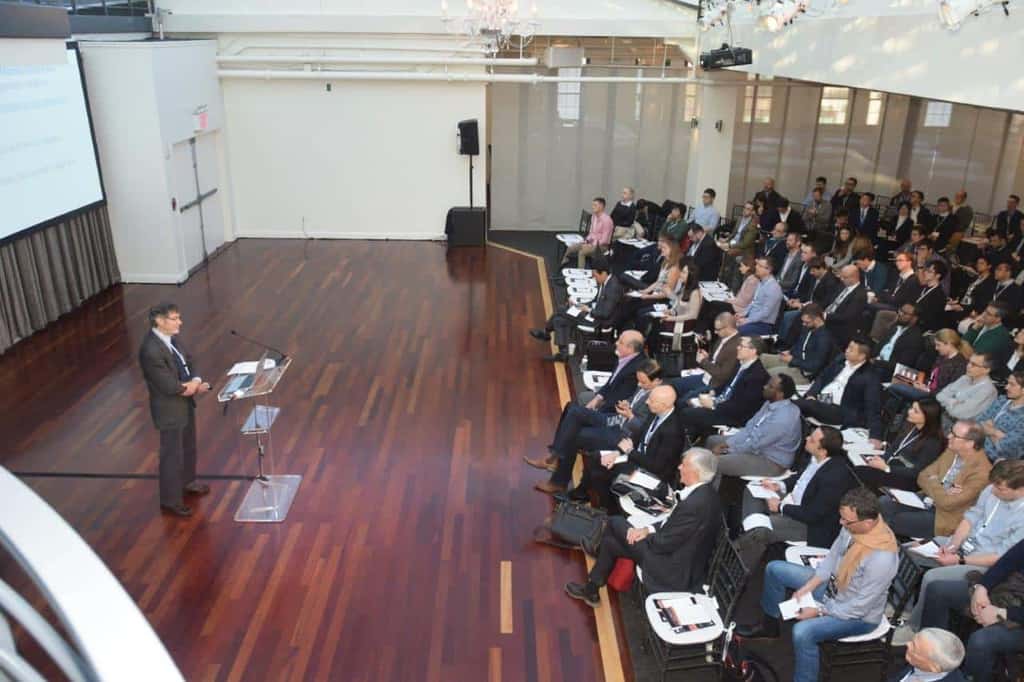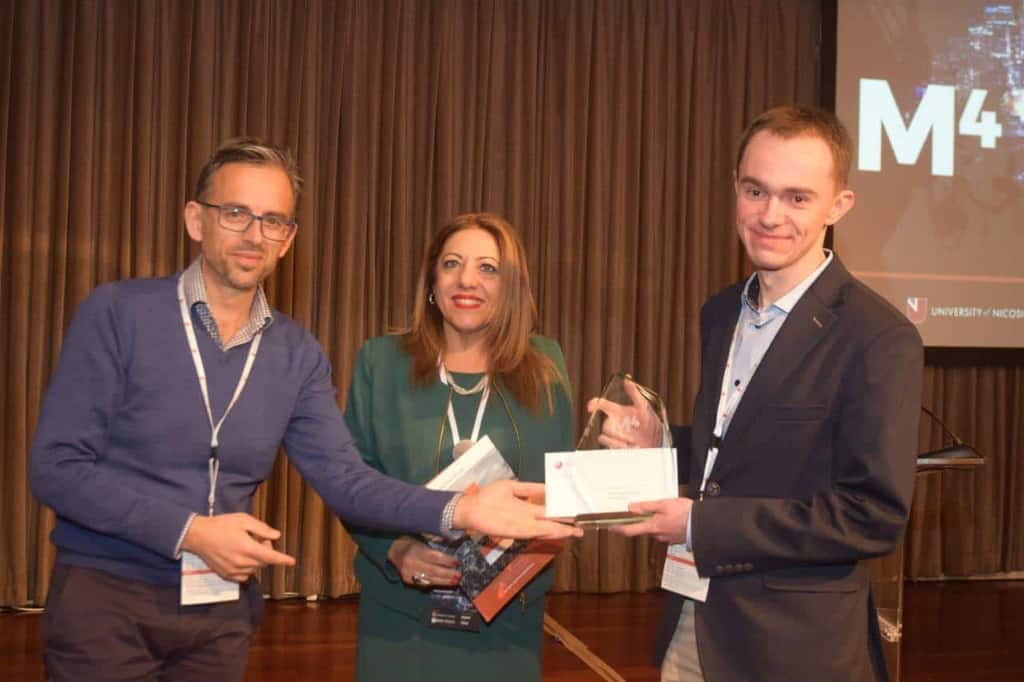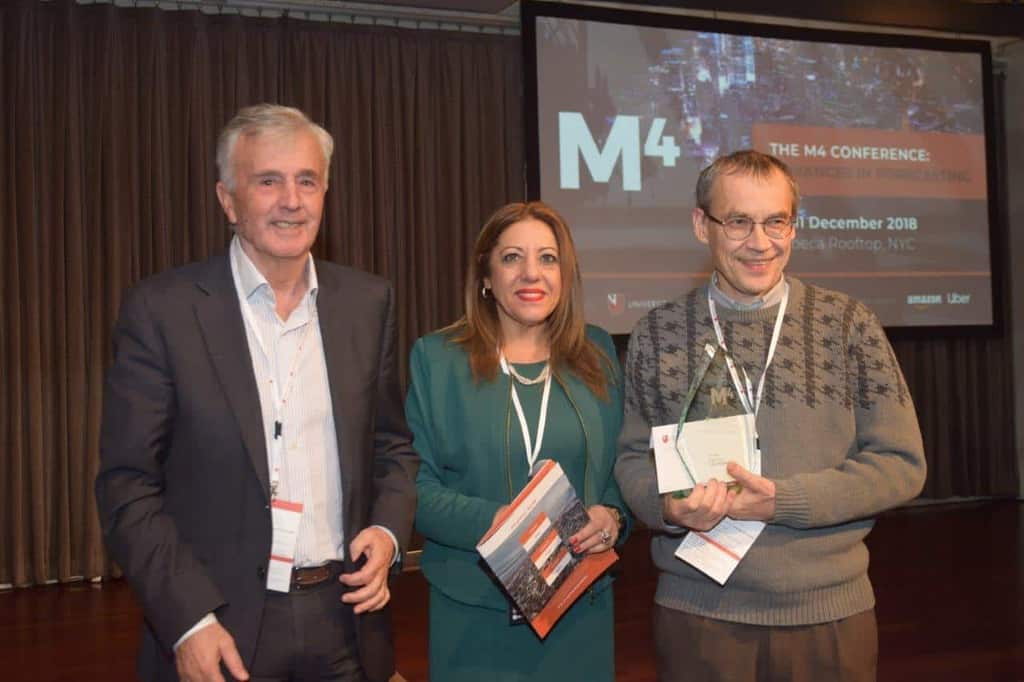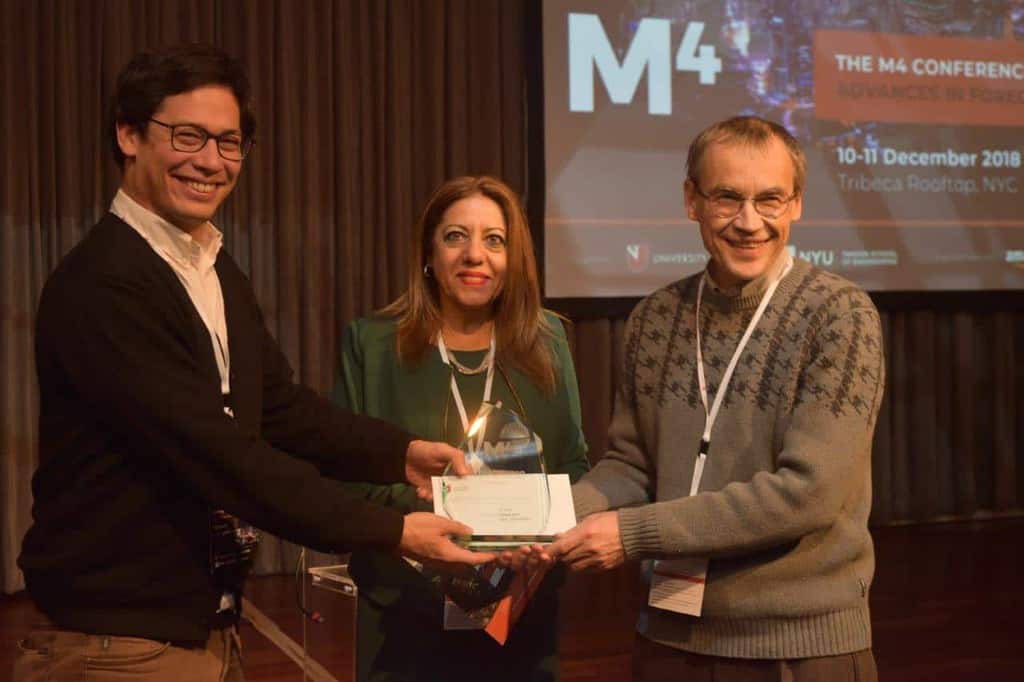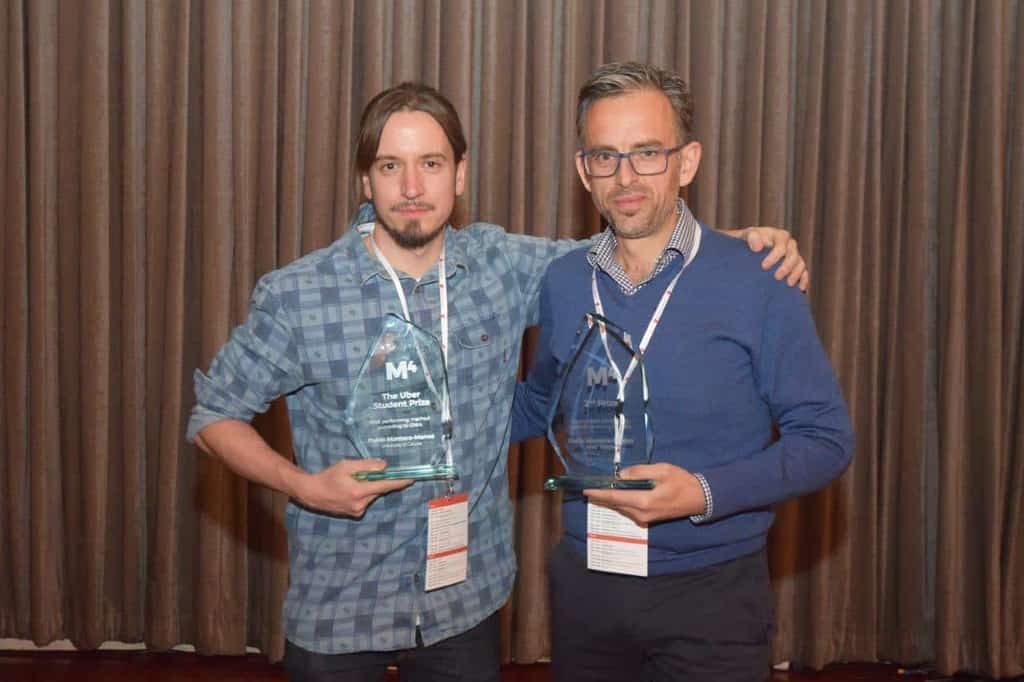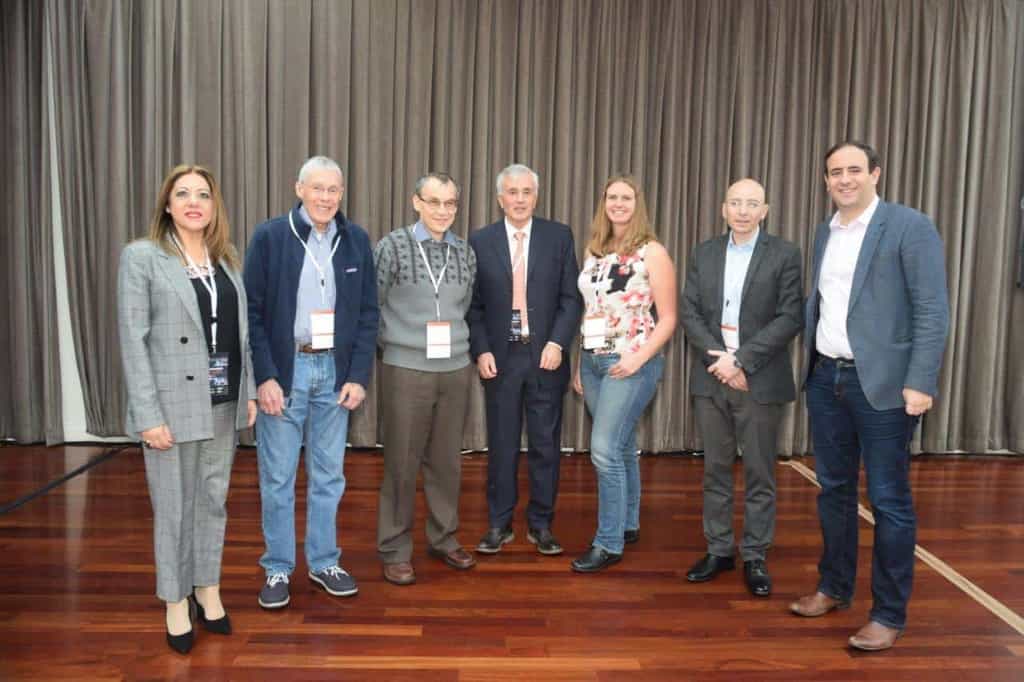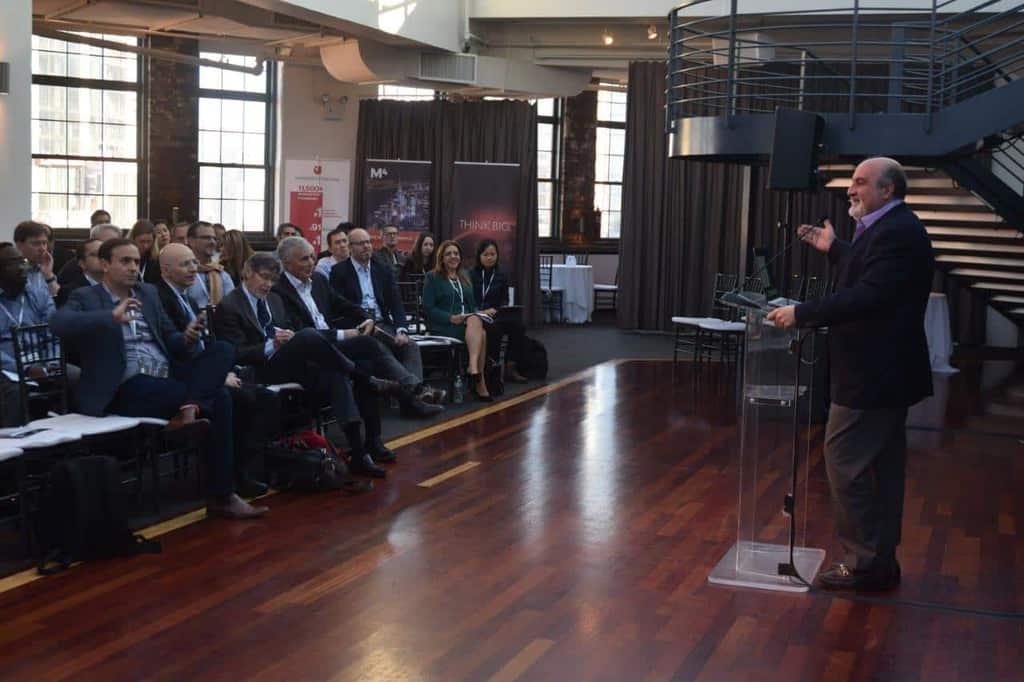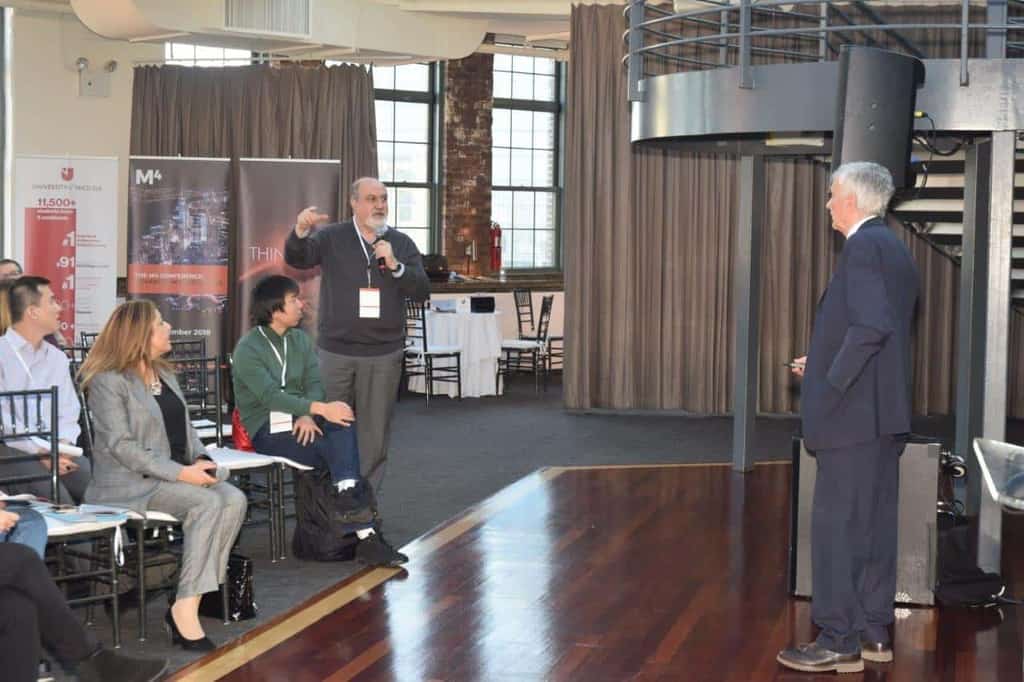The M4 Conference in NYC presented the latest advances in Forecasting
Distinguished speakers from high-tech giants and software firms, as well as top-tier universities, assembled in NYC for a dissection of UNIC’s global M4 Forecasting Competition
The Tribeca Rooftop, one of New York City’s premier event venues, played host last week (10-11/12/2018) to the two-day M4 Conference, assembling 20+ distinguished speakers from high-tech giants and software firms, including Google, Microsoft, Amazon, Uber and SAS, as well as leading academics from top-tier universities, such as world-renowned Professors Nassim Nicholas Taleb at NYU and Yael Grushka at the Harvard Business School.
The M4 Conference, organised by Professor Spyros Makridakis (for many, the father of forecasting), under the aegis of the University of Nicosia (UNIC), and with the support of NYU Tandon School of Engineering, elaborated on the findings of this year’s global M4 Forecasting Competition. To this end, the speakers discussed the implications of these findings at length, as well as their practical applications by business and other organisations in their effort to improve forecasting accuracy and correctly assess future uncertainty.
The M4 (Makridakis 4) is the latest edition of the premier academic forecasting competition in the world (co-organised earlier this year with the National Technical University of Athens), featuring a total of 248 individuals and teams from 48 countries across the globe. The revolutionary M-Competitions, which Professor Makridakis (whom the M-Competitions are also named after) launched four decades ago, have substantially contributed to improving forecasting accuracy and informing practitioners on the most appropriate forecasting method to use for their specific needs.
The M4 Conference succeeded in disseminating the M4 Competition findings over two days to a discerning audience of 150+ data scientists, financial managers, government officials, hedge fund managers, production managers, inventory managers, logistics and transportation officials, as well as academics and students in the field of forecasting. The participants have been highly positive in their social media posts, commenting on the value of the conference and the caliber of its speakers.
The conference itself covered all critical aspects of forecasting, including a new hybrid approach, combining statistical methods and introducing judgmental adjustments, placing special emphasis on the comparison of Machine Learning and Statistical forecasting methods, as well as the assessment of uncertainty. It featured presentations by the developers of the three most accurate methods highlighted in the M4 Competition (Slawek Smyl – Uber Technologies, USA; Pablo Montero-Manso – University of A Coruña, Spain; Maciej Pawlikowski – ProLogistica, Poland), showcasing how others can implement such forecasting methods (available free in Github) in their firms. Moreover, the M4 Conference provided an excellent opportunity for networking and discussion on the latest advances in forecasting by world-renowned experts.
One such expert was Nassim Nicholas Taleb, Professor of Risk Engineering at New York University, who is actively involved in risk-based policy-making, having at one time advised the IMF and UK Prime Minister David Cameron. Professor Taleb delivered the keynote speech on the first day of proceedings, in which he focused on uncertainty in forecasting. The other keynote speech was delivered by Professor Makridakis, who presented the far-reaching contributions of the M4 Competition to the theory and practice of forecasting. Other standout speakers at the inaugural forecasting conference in New York City included: Professor Scott Armstrong (Wharton School, University of Pennsylvania), Andrea Pasqua (Uber), Robert Winkler (Fuqua School of Business, Duke University), Tim Januschowski (Amazon) and Chris Fry (Google), among others.
The forecasting community is now looking forward to the launch of the next M-Competition – with preparations for the “M5” well underway – that will extend its coverage beyond time series methods to include additional explanatory and exogenous variables, to improve forecasting accuracy used for financial (stock and commodity market) and other predictions.
